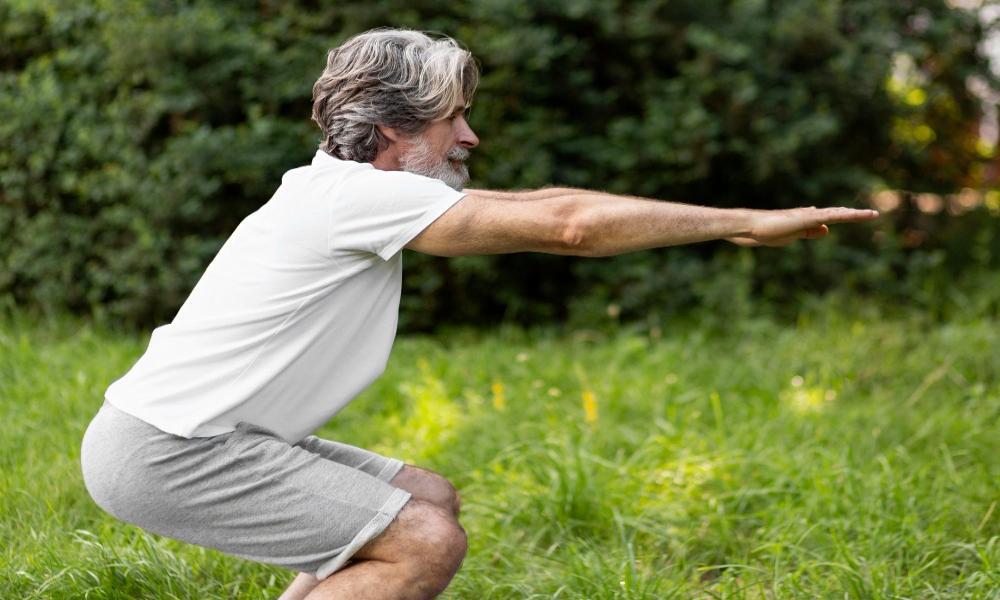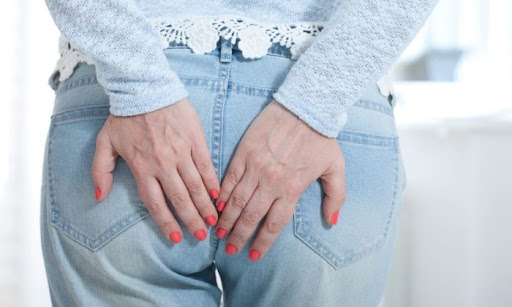Hemorrhoids can be an uncomfortable and persistent issue, often requiring a multi-faceted approach for effective relief. Alongside dietary and lifestyle changes, kegel exercises-known for strengthening the pelvic floor-have gained attention as a potential method to alleviate symptoms.
By enhancing muscle tone and circulation in the pelvic region, kegels may play a role in managing discomfort and reducing the risk of flare-ups.
Here, we will explore the potential benefit of kegel exercises in hemorrhoid relief.
What are kegel exercises?
Kegels or kegel exercises are a type of workout designed to strengthen the pelvic floor muscles, which are responsible for supporting the bladder, rectum and, in women, the uterus. These exercises involve contracting and relaxing the muscles that target the pelvic floor effectively. Although kegels were originally introduced to help women strengthen their pelvic muscles post-childbirth, but they are beneficial for men and people of all ages.

What Are Hemorrhoids?
Hemorrhoids are swollen veins located in the rectum or anus that cause pain, itching, and bleeding, especially during bowel movements. They are common but can be quite uncomfortable.
Recommended: Can You Do Kegels On Your Period?
Hemorrhoids can be internal, forming inside the rectum, or external, developing under the skin around the anus.
Causes Of Hemorrhoids?
There are several causes of hemorrhoids, some includes:
Straining During Bowel Movements
This has proven to be one of the most common causes of hemorrhoids. Straining places excessive pressure on the rectal veins, causing them to swell. Constipation and hard stools often lead to straining, which can be mitigated by a high-fiber diet and proper hydration.
Chronic Constipation or Diarrhea
Both chronic constipation and diarrhea can irritate the veins around the rectum. Constipation increases straining while diarrhea often leads to frequent, forceful bowel movements that irritates the anal area.
Prolonged Sitting or Standing
Sitting, especially on the toilet for extended periods, places continuous pressure on the rectal veins, increasing the risk of hemorrhoids.
Heavy Lifting
Frequent heavy lifting, whether from work or exercise, increases abdominal pressure and can lead to hemorrhoids.
Recommended: Can Kegels Cause Bleeding?
Aging
As people age, the tissues supporting the veins in the rectal area may weaken and stretch, making hemorrhoids common.

Obesity
Excess body weight, especially around the abdomen, puts additional pressure on rectal veins, making hemorrhoids more likely.
Can Kegels Help Hemorrhoids?
Kegel exercises, which involves contracting and relaxing the pelvic floor muscles, may provide relief for hemorrhoid symptoms by improving circulation and muscle tone in the pelvic region. Kegels strengthen the muscles that support the bladder, bowel and rectum, potentially reducing the pressure that contributes to hemorrhoid flare-ups.
By enhancing pelvic floor strength, Kegels can help improve blood flow in the rectal area, which may ease swelling and support healing in inflamed tissues associated with hemorrhoids. Improved muscle control can make bowel movements easier, reducing the need to strain, which is a common cause of hemorrhoids. Although kegels are not a cure, they can be a useful part of a holistic approach to managing and preventing hemorrhoid discomfort.
How to Do Kegels For Hemorrhoid Relief
Performing kegel exercises correctly can provide relief from hemorrhoids symptoms by strengthening the pelvic floor muscles, improving circulation, and reducing pressure in the rectal area. Here is a guide on how to do kegels specifically for hemorrhoid relief:
- Identify your pelvic floor muscles by trying to stop urination midstream once or twice.
- Find a comfortable position for the exercise. You can start by lying on your back with your knees bent and feet flat to the floor. As you get comfortable, you can try sitting or standing to engage the muscles in a more functional way.
- Contract (squeeze) your pelvic floor muscles by pulling them upwards and inwards. Hold for 3-5 seconds, keeping your glutes and thigh relaxed.
- After holding the contraction for a desired time, slowly relax the pelvic floor muscle for that same duration. It is essential to completely release tension before starting the next repetition.
- Aim to complete 10-15repetions in one set. You can gradually increase the duration of the contraction and repetitions as your pelvic floor muscles strengthen.
- Remember to breathe normally while performing the exercises, as holding your breath could cause additional pressure on the pelvic area. And try not to overdo it.
Recommended: How To Prepare Financially And Emotionally For Family Planning
Benefits of Kegel Exercises For Hemorrhoids
Kegels can offer several benefits for individuals dealing within hemorrhoids. Some of the benefits include:
Improved Blood Circulation
Kegels help strengthen the pelvic floor muscles, which can improve blood flow to the anal and rectal areas. This increased circulation helps reduce swelling, inflammation, and pain associated with hemorrhoids. Better circulation also aids in the healing of damaged tissues around hemorrhoids.
Reduced Pressure On The Rectal Veins
The pelvic floor muscles support the lower bowel and rectum. By strengthening these muscles, kegels help reduce the strain on the veins around the anus, which is one of the causes of hemorrhoids. Reducing the pressure on these veins can ease discomfort and prevent hemorrhoid flare-ups.
Recommended: How long does it take to conceive after stopping birth control?
Non-invasive And Convenient
Kegel exercises are non-invasive ways to manage and relieve hemorrhoid symptoms. They can be performed discreetly at home, and without any special equipment, making them convenient and low-cost for hemorrhoids.
Helps With Postpartum Recovery
For women who experience hemorrhoids after childbirth, Kegels can be particularly helpful. Childbirth can weaken the pelvic floor muscles, contributing to the development of hemorrhoids. Kegel exercises can help rebuild the muscles, supporting recovery and reducing the risk of hemorrhoid recurrence.
Relief From Pain And Discomfort
Strengthening the pelvic floor can help alleviate the discomfort and pain caused by hemorrhoids. By Improving muscle tone, Kegels can support the tissue around the anus, providing some relief from the pain, itching, and burning sensations that are commonly associated with hemorrhoids.

Prevention Of Straining During Bowel movements
One of the most common triggers for hemorrhoids is straining during bowel movements. Kegel exercises help improve the control and coordination of the pelvic floor muscles, making it easier to have smoother, more controlled bowel movements. This reduces the need for strain, which can prevent the formation or worsening of hemorrhoids.
Conclusion
Kegel exercises can be an effective and helpful way to manage hemorrhoid symptoms by strengthening the pelvic floor muscles, improving circulation, and reducing strain during bowel movements. Although they might not cure hemorrhoids, regular practice can provide relief and support overall pelvic health.
